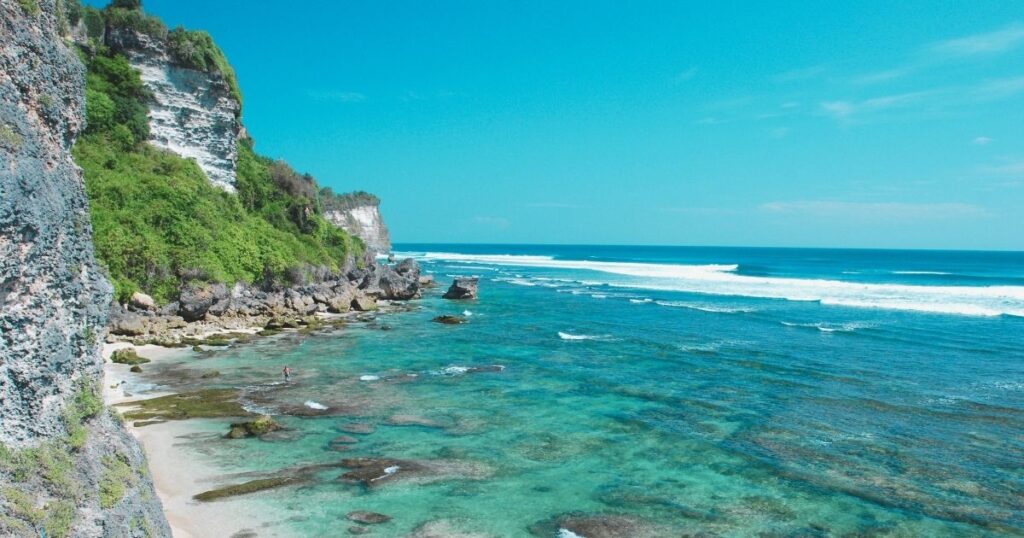Picture this: you’re sipping your morning coffee while watching surfers ride perfect waves, your laptop is open, and you’re about to join a video call with clients halfway around the world. This isn’t just a dream—it’s the daily reality for thousands of digital nomads who’ve discovered that knowing where to stay in Bali can transform their remote work experience into something truly extraordinary.
Bali has evolved into one of the world’s premier destinations for location-independent professionals, offering an incredible blend of tropical paradise and modern infrastructure. From bustling coworking hubs to serene rice field retreats, this Indonesian island provides diverse neighborhoods that cater to every budget, work style, and lifestyle preference. Understanding where to stay in Bali is crucial for maximizing both your productivity and quality of life. Whether you’re seeking the vibrant digital nomad community of Canggu, the cultural richness of Ubud, or hidden gems that offer exceptional value, this comprehensive guide will help you find the perfect area to call home during your Balinese adventure.
Canggu: the heart of Bali’s digital nomad scene

Canggu has emerged as the epicenter of Bali’s remote work revolution. This coastal village, just north of Seminyak, has transformed from a quiet surfing spot into the hub for digital nomads and remote workers seeking the perfect blend of professional amenities and lifestyle benefits.
The area offers an unmatched combination that makes it the go-to choice for many nomads. Canggu has an incredible selection of villas, though prices can be high if a central location is important to you. The neighborhood pulses with energy, featuring everything from beachfront cafes with high-speed Wi-Fi to sophisticated coworking spaces designed specifically for digital professionals.
Living costs and community in Canggu
A two-bedroom villa could cost as little as $550 for an entire month, though for a mid-range budget, a total of $1,000 monthly is probably about right. This pricing reflects Canggu’s position as a premium destination within Bali, but the investment pays dividends in terms of infrastructure and community.
Canggu has by far the best digital nomad community in Bali. You definitely won’t have any trouble finding cafes, restaurants, or coworking spaces to do your work in this area. The neighborhood hosts regular networking events, skill-sharing workshops, and social gatherings that make it easy to build both professional connections and friendships.
🌟 Pro tip: book accommodation for just a few days initially when you first arrive. The best deals and most suitable long-term rentals are often found through local connections and word-of-mouth recommendations from fellow nomads.
Budget-friendly alternatives: Pererenan, Berawa, and Kerobokan
For those wondering where to stay in Bali without breaking the bank, the areas surrounding Canggu offer exceptional value. If you want to enjoy the many benefits of staying in Canggu but are looking for something more affordable, consider the neighbouring areas of Pererenan, Berawa, Umalas, or Kerobokan. They lie only a short scooter ride away from the heart of Canggu and are becoming increasingly popular.
These emerging neighborhoods represent the sweet spot for budget-conscious nomads who still want access to Canggu’s amenities and community. When considering where to stay in Bali on a budget, these areas consistently offer the best value proposition. Canggu can be quite crowded while its neighbours are still largely spared by tourist crowds, making these areas ideal for nomads who prefer a more relaxed environment for focused work.
Connectivity solutions for emerging areas
High-speed fiber-optic internet is now widely available in popular areas like Canggu, Ubud, and Seminyak, with speeds up to 300 Mbps in many coworking spaces and villas. The areas surrounding Canggu have benefited from this infrastructure development.
For those times when you need guaranteed connectivity anywhere on the island, consider using Holafly’s reliable eSIM service to ensure you’re never without internet access during important client calls or deadlines.
💡 Did you know? Many properties in these emerging areas offer month-to-month rental agreements with modern amenities at significantly lower costs than central Canggu, perfect for nomads who value both flexibility and savings.
Ubud: where culture meets connectivity

Ubud is known for its focus on wellness, spirituality, and healthy lifestyle, making it an ideal destination to stay in Bali for digital nomads looking to work in a more relaxed environment. Surrounded by rice terraces, ancient temples, and lush jungle, Ubud offers a completely different pace compared to the coastal areas.
This cultural heart of Bali attracts nomads seeking balance, inspiration, and a deeper connection with Balinese traditions. For those debating where to stay in Bali for long-term productivity and personal growth, Ubud frequently emerges as the top choice. The area has developed sophisticated infrastructure for remote workers while maintaining its spiritual and artistic essence.
Work-life balance in Ubud
Surrounded by lush rice fields, jungles, and temples, Ubud offers a peaceful atmosphere, far from the hustle and bustle of Bali’s more touristy areas. Many nomads report increased productivity and reduced stress when working from Ubud, making it an excellent choice for those in creative fields.
Although Ubud is quieter than Canggu, it also has highly rated co-working spaces such as Beluna and Outpost Ubud. These spaces offer perfect environments to work in, with breathtaking views of the rice fields and jungle, often incorporating wellness elements like yoga classes and meditation sessions.
🌟 Pro tip: Ubud’s elevated location means cooler temperatures and occasional rain, making it perfect for nomads who find the coastal heat challenging for productive work sessions.
Sanur: the hidden gem for long-term stays
Often overlooked in favor of trendier areas, Sanur offers compelling advantages for nomads planning extended stays. Sanur is a town on the east coast of Bali that is popular with digital nomads. It’s cheaper than the west coast of Bali and provides a more mature environment with excellent infrastructure.
Why Sanur works for digital professionals
Sanur is generally an affordable place to live, and the beaches are calm and clean. The digital nomad community is small but tightly knit, and you’ll find mostly residents who live in Bali long term. This creates a different dynamic from the more transient communities in other areas.
The area’s calmer atmosphere and established infrastructure make it particularly suitable for nomads with demanding work schedules or those who need consistent, distraction-free environments. There are plenty of good restaurants and cafes, and it’s easy to access ferries that go to nearby islands.
However, Sanur is somewhat cut off from other digital nomad areas in Bali like Canggu or Uluwatu. This isolation can be either a benefit or drawback depending on your priorities.
💡 Did you know? Sanur’s eastern location means you’ll experience stunning sunrises over the ocean, providing natural motivation for early morning work sessions before the day gets busy.
Alternative areas: Uluwatu and northern Bali

For nomads seeking unique experiences, Bali offers several alternative areas worth considering. Uluwatu is one of the most beautiful areas in Bali, perched on dramatic cliffs overlooking the Indian Ocean with world-class surfing. While accommodation costs can be higher due to stunning locations, the inspiring environment often justifies the investment for creative professionals.
The northern and eastern parts of Bali consist mainly of small towns with limited tourism. While you can find some great options here, keep in mind that internet speed might be questionable, which could impact your work. These areas appeal to adventurous nomads seeking authentic experiences and lower costs.
Digital infrastructure across Bali
Understanding Bali’s digital infrastructure is crucial when deciding where to stay in Bali as a remote professional. Internet infrastructure has significantly improved in recent years, with mobile data plans from providers like Telkomsel and Smartfren also being reliable and affordable.
Most accommodations in popular areas now advertise their internet speeds, understanding that connectivity is often the deciding factor for location-independent professionals. The question of where to stay in Bali often comes down to balancing connectivity requirements with lifestyle preferences and budget constraints. Having backup connectivity ensures you’re never caught without internet access during important work commitments.
🌟 Pro tip: always test internet speeds and reliability during your first few days in any new accommodation. Having backup connectivity options ensures you’re never caught off-guard during important client meetings or deadlines.
Final thoughts
Deciding where to stay in Bali ultimately comes down to understanding your own priorities and work requirements. Whether you choose the vibrant energy of Canggu, the cultural richness of Ubud, the reliable tranquility of Sanur, or the adventurous appeal of emerging neighborhoods, Bali offers options for every type of digital nomad.
The island’s continued investment in digital infrastructure, combined with its natural beauty and welcoming culture, ensures that wherever you choose to base yourself, you’ll have access to the connectivity and amenities needed for productive remote work.
Ready to start your Bali adventure? Proper planning makes all the difference in creating the perfect remote work experience. For comprehensive guidance on choosing affordable destinations worldwide, explore Nomada’s guide to the cheapest cities for digital nomads for detailed information about budgeting strategies and cost-effective locations for location-independent professionals.
Your dream of working from paradise is closer than you think—let Nomada help you make it a seamless reality 👉
Frequently asked questions
Monthly costs vary significantly by area and lifestyle. Canggu typically ranges from $800-1,500 for comfortable living, while areas like Pererenan and Sanur can be managed for $500-800. Ubud falls somewhere in between at $600-1,000, depending on accommodation choices and dining preferences.
Most experienced nomads recommend booking only 2-3 nights initially. The best long-term deals are often found through local connections, Facebook groups, and word-of-mouth recommendations once you arrive. This approach also allows you to test areas before committing to longer stays.
Canggu, Ubud, and Seminyak offer the most reliable high-speed internet infrastructure. Most coworking spaces and modern accommodations in these areas provide fiber-optic connections with speeds suitable for video conferencing and large file transfers.
Transportation between areas is relatively easy and affordable. Scooter rentals cost around $5 per day for maximum flexibility, while ride-sharing apps like Grab provide convenient options for longer distances. Most nomads enjoy exploring different neighborhoods before settling into their preferred long-term base.
Canggu is often recommended for first-timers due to its established infrastructure, large nomad community, and abundance of resources. The area provides an easy introduction to Balinese nomad life with plenty of support systems and networking opportunities to help newcomers settle in quickly.




